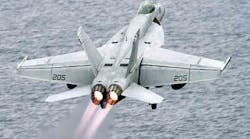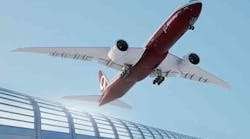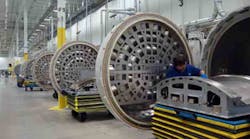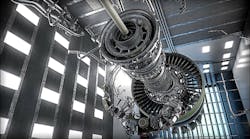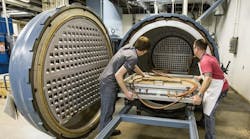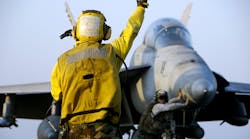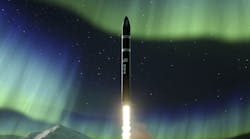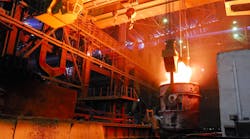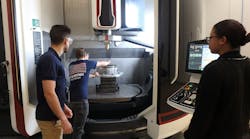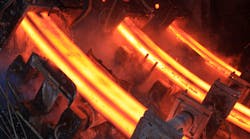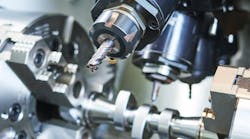GE Aviation reported it has been successful in its tests of non-static, lightweight, ceramic matrix composite (CMC) parts for running rotating low-pressure turbine blades. The first-in-the-world test was conducted in a F414 turbofan demonstrator engine, and was designed to validate further the heat-resistant material for high-stress operation in GE’s next-generation Adaptive Engine Technology Demonstrator (AETD) program.
The AETD program is currently in development with the United States Air Force Research Lab (AFRL).
The GE F414 is an afterburning turbofan engine in the 22,000-pound (98 kN) thrust class and used in military jets, including the Boeing F/A-18E/F Super Hornet.
CMCs are composed of silicon-carbide ceramic fibers and ceramic resin. GE Aviation has invested over $1 billion in R&D of CMCs since the 1990s, and manufactures the material and part at plants in Delaware and North Carolina. The CMC plant in Newark, DE, built the turbine components for the F414 test.
GE stated that introducing rotating CMC components into the hottest, most demanding sections of jet engines “represents a significant technology breakthrough for GE and the jet propulsion industry.”
CMC parts have been adopted successfully for static parts of jet engines, like the high-pressure turbine shroud that CFM International (a GE Aviation joint venture) for the LEAP engines being developed for commercial aircraft (including the Airbus 320neo and Boeing 737 MAX.)
In the F414 tests, GE validated the temperature tolerance and durability of CMC turbine blades made over 500 duty cycles, allowing for expansive deployment of the advanced manufacturing material in GE’s adaptive cycle combat engine and next-gen commercial engines.
GE noted that the CMC rotating turbine blades are one-third as heavy as the nickel alloys conventionally used in high-stress turbines, which means that the metal disks to which the blades are attached also can be reduced in size and weight.
“Going from nickel alloys to rotating ceramics inside the engine is the really big jump. But this is pure mechanics,” according to Jonathan Blank, general manager of CMC and advanced polymer matrix composite research at GE Aviation. “The lighter blades generate smaller centrifugal force, which means that you can slim down the disk, bearings and other parts. CMCs allow for a revolutionary change in jet engine design.”
